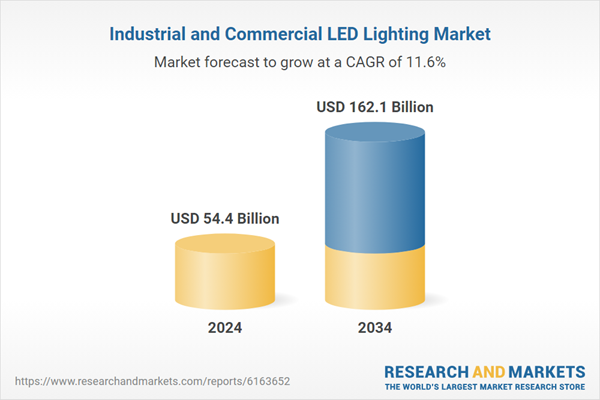Meanwhile, human-centric lighting, designed to mimic the natural progression of daylight, is gaining widespread popularity in environments such as offices, healthcare facilities, and educational institutions. This lighting approach aligns artificial illumination with circadian rhythms, helping to regulate sleep cycles, improve concentration, and reduce fatigue. As people spend increasing amounts of time indoors, the demand for lighting solutions that promote biological comfort and mental alertness continues to rise. Employers and facility managers are prioritizing these systems to boost productivity, employee satisfaction, and overall wellness.
The LED lamps segment generated USD 22.9 billion in 2024, supported by widespread compatibility with existing fixtures, minimal maintenance, and strong performance. These lamps are particularly appealing to small and medium-sized enterprises because they eliminate the need for costly retrofit installations. Demand is especially strong in the office, retail, and hospitality sectors, seeking energy savings with minimal disruption.
The new installation segment is projected to reach USD 102.1 billion by 2034, driven by new commercial construction and urban development. Developers are incorporating LED lighting in greenfield projects to meet energy codes and smart building standards. Increasingly, LED systems are being deployed with sensors, dimming controls, and integrated cost-of-ownership benefits to align with both regulations and corporate ESG goals.
U.S. Industrial and Commercial LED Lighting Market accounted for USD 11.4 billion in 2024. This dominance reflects extensive industrial and commercial infrastructure, along with policy frameworks like Title 24 and ASHRAE that encourage energy efficiency. With lighting accounting for over 17% of commercial energy use, federal incentives like ENERGY STAR and state rebate programs are accelerating LED adoption. American firms are also driving innovation in smart lighting technologies and connected systems.
Prominent players in the Global Industrial and Commercial LED Lighting Market include Zumtobel Group, Eaton, Signify, ams OSRAM AG, Current Lighting Solutions, LLC, Hubbell Incorporated, and Acuity Brands - all advancing sustainable, smart lighting solutions. To strengthen their market position, leading companies in this sector are prioritizing innovation in intelligent lighting, integrating IoT and analytics-driven lighting control systems to offer energy-efficient, user-friendly deployment. They are expanding global sales channels and forming strategic partnerships with real estate developers and infrastructure firms to secure large-scale projects. Product diversification - ranging from sensor-integrated fixtures to human-centric luminaires - allows firms to meet varied sectoral needs. Firms are also engaging in regulatory advocacy and aligning products with building codes and green certification standards.
This product will be delivered within 2-4 business days.
Table of Contents
Companies Mentioned
The companies profiled in this Industrial and Commercial LED Lighting market report include:- Acuity Brands
- ams OSRAM AG
- Cree Lighting
- Current Lighting Solutions, LLC
- Dialight plc
- Eaton
- Hubbell Incorporated
- LG Electronics
- NVC Lighting
- Panasonic Corporation
- Phoenix Lighting
- RAB Lighting
- Samsung LED
- Sharp Electronics
- Signify
- Siteco GmbH
- Toshiba Lighting
- Trilux
- Vorlane
- WAC Lighting
- Wipro Lighting
- Zumtobel Group
Table Information
| Report Attribute | Details |
|---|---|
| No. of Pages | 180 |
| Published | July 2025 |
| Forecast Period | 2024 - 2034 |
| Estimated Market Value ( USD | $ 54.4 Billion |
| Forecasted Market Value ( USD | $ 162.1 Billion |
| Compound Annual Growth Rate | 11.6% |
| Regions Covered | Global |
| No. of Companies Mentioned | 23 |









